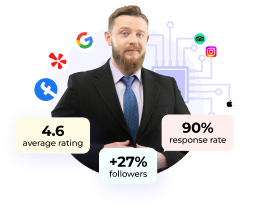Behavioral targeting is the display of ads based on the user’s interests. Search engines and social networks analyze queries, and select advertising offers according to what information people search for on the Internet, how they entertain themselves, what they buy, and how much time they spend on each site. To do this, they use cookies — files that are transferred from the browser to a web server from the resources visited by a particular user. The information is confidential.
Behavioral analysis happens all the time. As soon as a person’s interests change, search engines and social networks pick up new offers for them.
Sometimes users have the impression that the Internet reads their minds. Otherwise, how to explain the fact that it offers products that they were just about to buy? But everything is much simpler — it is well-tuned advertising.
Why do I need behavioral targeting?
- Behavioral targeting allows you to cut off non-targeted audiences and show promotional offers only to those who are interested in the product. This helps avoid inefficient budget spending.
- Increases clickability and the number of bids from ads.
- Expands the reach of the target audience. While in thematic targeting, ads are only displayed on sites that match the ad’s content, in this case, there are no restrictions. It is tied only to the interests of the user. Ads “haunt” the potential client and are shown on any site, even if it has nothing in common with the content of the ad.
Thus, behavioral targeting generates up to 80% of all ad conversions.
Where is behavioral targeting used?
User behavior data serves the purpose of:
- studying interests, preferences, and plans;
- formation of full “portraits” of different segments of the target audience;
- the possibility of setting up contextual advertising and E-mail distribution to the most interested people;
- increasing loyalty to the product and response to advertising;
- expansion of the target audience.
Behavioral targeting allows you to show ads to users who are really interested in the advertised product or service. You can reach the target audience even on those pages with content that doesn’t match the subject of the ad.
Behavioral targeting examples
Here are some basic examples of behavioral targeting.
Emails:
- What emails did the consumer open or click on?
- What emails did they NOT open or click on?
- What type of offers do they respond to most often?
- When was the last time he or she interacted with an email — three days, three weeks, or three months ago?
- Who responds often, and who rarely responds?
Social media:
- Has the consumer mentioned your company on Twitter?
- Did they click through to your site from Facebook?
- Did he or she share your posts?
- Did they comment on your blog post?
Website:
- Has the consumer visited your website? If so, how long ago?
- What content were they downloading or viewing?
- What keywords did they use to go to your site?
- How long did he or she stay on your site?
- How many pages was he or she browsing while they were there?
Inactive behavior:
Targeting based on this factor can be no less effective than all the others.
It is possible to conduct additional targeted mailings to customers who have registered and then left the resource. Putting them a unique offer can bring attention back to the site and possibly re-allocate the client to it.
Or the client, which, according to statistics, on a particular day of the week performed a specific action, but suddenly missed it will feel a large share of the attention received a letter, notifying the incomplete habitual action and care of the Internet resource, which inquired about the reasons for such behavior.


